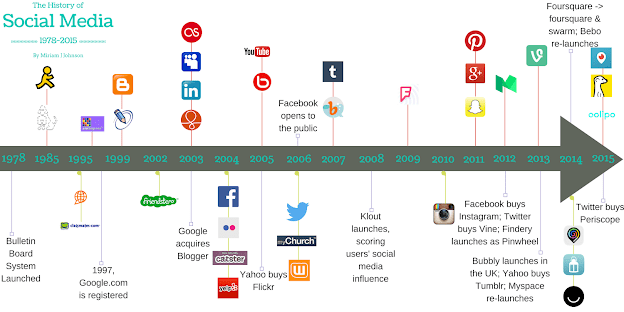Journal Week 2: The Value of Social Media and Social Change
What will history say about social media?
Since the advent of the internet, social media has taken shape in ways that many people never thought it would. Different platforms offer different experiences and interactions with peers online regarding a plethora of topics. What started out as chat rooms and message boards turned into separate applications that allowed for photo albums, sharing one's "status," and bigger social groups that only existed in the web space. But as social as the initial take off was, a separate web also morphed into a sort of citizen reporting space.
Clay Shirky, a "social media theorist," gave a Ted Talk in 2009 that outlined what this looked like around the world and how social media had re-focused the internet.
Even with the age of this video, Shirky makes some claims and points out examples that still hold true today in a social media sphere that has entirely new applications and functions.
He notes three major changes that the internet has brought about:
- Media has now become a many-to-many conversation where groups can have conversations with multiple people at once. The phone, TV, radio—none of them had been able to do that previously.
- The internet has become the storehouse for all media; in essence, it is the media that carries the rest of the media. It houses films, newspapers, etc. and now users can discuss the media they consume in the same space it exists.
- The audience has now become producers, they are no longer only the consumers. Anyone could publish books, articles, post music, videos—things that were not easily accessible or possible before. The social connections of producing media grew.
He also points out that citizen reporting has gone up as a result to the access to quick communication, transforming the journalism landscape to include everyone. Reporting what is happening is not limited to journalists with a press pass. Chinese Twitter users were able to post the May 2008 earthquake in real time, as well as the aftermath of what had happened. Journalists didn't have to hop on planes and hustle to the location; they could simply log onto Twitter and get real-time updates. While this was novel to the scope of the internet, it wasn't exactly loved by Chinese officials.
While the Chinese Government famously censors its citizens and what they can consume, they were not able to stop the spread of information going out of the country. But then, when it was discovered by the people of Sichuan Provence that schools that had collapsed during the quake were not built to code thanks to bribes to corrupt officials, citizen journalists began sharing that story as well. China finally stepped in.
The protesting got so intense that the government took Twitter away completely. The official day of the shut down? The 20th anniversary of Tiananmen Square. This is one of those moments where English teachers stop what they are doing and proceed to review "irony" with their class.
But Shirky brings this up because he wants to emphasize how different the dissemination of media and content has become. The audience is also the producer in a lot of cases. Audiences can respond directly now and they can create their own spaces where similar views are held. There are more participants who also usually happen to be amateurs, and opinions can be shared a lot easier and gain supporters. More chains of communication are being created.
What makes this Talk to interesting to me is the fact that watching it today in 2025 makes me reflect in a very personal way on how social media has impacted my life and my career. Social media serves as an echo chamber for a lot of people, whether that chamber is based on fact or feeling. Algorithms have become so tailored to our needs and interests that we forget that our experience isn't so much personalized as it is tracked and aligned with the algorithms of others. Social media still has the ability to present a real view of what is happening in the world and allow the users—now producers—to share their genuine experiences.
Earlier in the year when Tik Tok went offline for American users (albeit for less than 48 hours), international users noted how different their FYPs were and what content they were being fed. When it came back online in America, people seemed to be a lot more willing to pay attention to what topics they were seeing come across their page, skeptical that information was being suppressed. This realization seems to have made users a lot more aware when it comes to scrolling and engaging with certain pages and posts.
Most people I know admit that they become aware of the news through social media, and then take it upon themselves using their own media literacy skills to research the news story. In a modern world where major news sites are owned by major media conglomerates that can potentially be influential in the passing of legislation and advertising decisions, it's easy to understand why people would rather use their own skills to find out about news topics than rely on major outlets to report it to them.
Major events will always be talked about online now that social media has become a regular form of entertainment and information for most people. Consumers will continue to also be producers, providing friends and social groups online with information in real time.
.gif)

Comments
Post a Comment